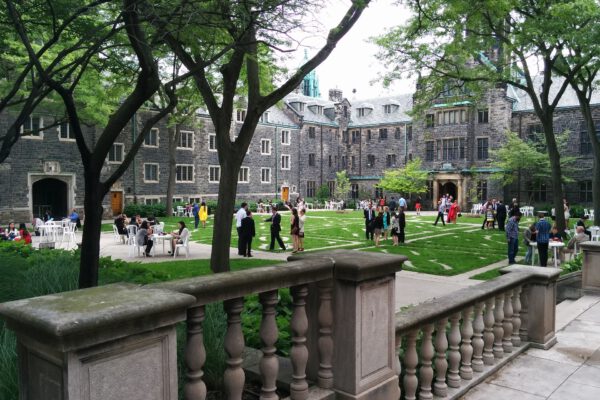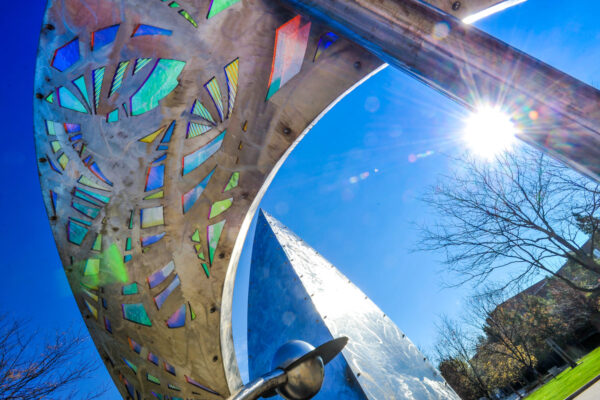By John Marx
John Marx is blogging about his year in the ACE Fellows Program in a series of posts centered on the idea of “place” in American higher education leadership. Marx, professor and chair of the English Department at University of California, Davis, is spending his year working with President Elizabeth Hillman at Mills College in Oakland, California.
If being president of a college or university can be the hardest job in the nation, leaders who move to a radically different place—in terms of sector, geography, or both—confront an added level of difficulty.
I reached out to presidents who have leapt across the lines that divide higher education to learn more about how “place” shapes the challenges of leadership. Their responses identified the difficulty of adapting to local culture while confirming that is the first step to building trust among constituencies on and off campus.
“After seven terms as president at five different institutions, I have observed American higher education from nearly every vantage point,” West Virginia University President E. Gordon Gee told me. “The biggest shock I received was moving from one of the nation’s top public land-grant institutions—The Ohio State University—to the rarified Ivy League atmosphere of Brown University. During my opening press conference, I made the seemingly innocuous comment that private universities ought to be in the public service. From the ensuing criticism, you would have thought that I proposed turning Brown into a trade school.”
If there was any initial reluctance, Brown seems to have come around to the notion of being a private institution in the public service. Gee’s comment is memorialized in the last paragraph of the university web page devoted to his tenure, right before the sentence describing his departure.
To be clear, Gee left Brown to become president at Vanderbilt University (TN), then Ohio State for the second time, and now, West Virginia. His wide experience helped earn him the top spot in a recent ranking of college presidents, and he is widely recognized as an authority on the past and future of land-grant universities. Faced with the potential drama involved in moving from one type of institution to another, Gee’s career ably demonstrates that it is possible to land very much on your feet.

It is a trick though, according to University of Minnesota, Morris Chancellor Michelle Behr.
“Because colleges and universities are both mostly the same and simultaneously unique products of place, a leader arrives with certain tools and experiences that form her general approach to leadership. At the same time, like an anthropologist it is crucial to develop local cultural expertise,” she said.
Behr knows of what she speaks, having moved to the Upper Midwest from the deep South—Birmingham-Southern College in Alabama, to be precise.
The question of how and whether to embrace the role of academic leader as anthropologist is a pressing professional development matter for this year’s ACE Fellows, who are being hosted on campuses potentially very different from their own. It also gets at the heart of the Fellows Program as a whole, which asks institutions to invest in leadership training on behalf of the sector. In a recent assessment of the program, ACE discovered that the “motivating force behind mentoring a Fellow, for many mentors, was the opportunity to contribute to the field.”
In past years, some Fellows have found the experience of being hosted on a very different kind of campus affirming of their situation at home. Others have discovered that success as a higher education leader need not mean staying in your lane.
Consider the experience of Kenya Ayers, the newly named president of Tarrant County College’s Northeast Campus in Hurst, Texas.
Ayers was an ACE Fellow in 2015–16. Her home at the time was Harper College, a community college with around 14,000 students in Palatine, Illinois, in the Chicago suburbs. Her host was the University of Houston, where she worked with Renu Khator, chancellor of the four-university system (with a total of 70,000 students) and president of the flagship R1 campus (which itself enrolls about 42,000 of those students).
That year’s big move from community college to university system in itself does not encompass the range of Ayers’s experience, however.
“My career has taken me to Michigan (my home state) twice, to Florida, to Texas (twice, though I believe this third time will be the charm), to DC, and to Illinois,” she recounts. “Each setting has offered something entirely different in terms of state versus local autonomy, unionized vs. non-unionized environments, educational philosophies, private versus. public settings, four-year versus community college settings.”
Which of these differences matter the most? It depends who you ask. For Ayers, “When I think about moving from small private universities to the larger institutions (two-year or four-year) where I have been most recently, bench strength and politics are the biggest differentiators.”
For Virginia Commonwealth University (VCU) President Michael Rao, the distinction of leading an institution with a hospital system stands out. He sees opportunities and “also challenges related to leading a nationally preeminent academic health center at a time when health care—as an industry—is becoming more and more complex.”
“We strive to provide health care to people who have had to rely on emergency rooms as their primary health care provider,” he said. But also, “We benefit from the close integration of our university, especially in terms of human health research” and in collaborations such as those across the School of Medicine and School of Arts.
Being part of a large state system caught the eye of the University of North Carolina at Charlotte Chancellor Philip L. Dubois when he moved there from the presidency at the University of Wyoming (UW).
“As I used to say at my civic club appearances around the state [Wyoming], ‘UW is not just the flagship; it’s the whole fleet!’” In contrast, Dubois wrote, “In North Carolina, campus-based needs become part of a UNC system-wide budget request, with 17 institutions with unique missions, histories, cultural settings, enrollments, and regional constituencies competing for the available funding.”
There’s an added twist in Dubois’s case, however. Before going to Wyoming, Dubois was provost at UNC Charlotte. When he came back to Charlotte to become chancellor there, the place had changed: “The Charlotte I returned to was significantly larger than the one I left, both in terms of the university’s enrollment but also the community within which it sits.”
Place is not a static quality. Geographic locations change just as much as institutions of higher education can. And the stakes of understanding the dynamic relationship between institution and place have never been higher.
“As we think about the future of higher education and the rapidly evolving ecosystems within which institutions are operating, doing the groundwork necessary to bring one’s colleagues along is vital to success,” Behr observed. “Understanding place is an important component of the groundwork.”
Distinction is not necessarily something one grasps by comparing places with one another, noted Wake Forest University President Nathan O. Hatch. “There was a sense,” he remembered from his arrival at Wake from the University of Notre Dame, where he had been provost, that “the ways we were special were almost indescribable; that what made us different could not be explained, only experienced.”
As a result, Hatch identified the challenge of crafting a specific and expressive language. “By defining ourselves as a ‘collegiate university,’ for example,” he explained. “I think we have been able to more accurately describe the niche we inhabit and the type of education we provide: one that has the expanse of university but teaches like a college. This framing continues to provide a very useful strategic context for our thinking and planning.”
All the presidents I contacted prioritize such foregrounding of specificity.
For example, it is important to Rao’s understanding of VCU that this is “a public research university located in the heart of the city of Richmond.” Step on the campus and you immediately sense that location entails relationships. VCU’s growth has involved renovating rundown commercial real estate, as the university infuses itself into a confluence of neighborhoods. The opening of new facilities is an event for the city as well as the university. To mark the opening of its new art museum in 2018, VCU threw a celebratory block party.
Because location implies relationship, institutional fortunes hinge on the affordances of place.
“Wyoming’s historic dependence on agriculture and mineral extraction,” Dubois recalled, “leave [that] university far more vulnerable to more frequent economic downturns that UNC Charlotte can usually avoid or manage” in one of the country’s fastest-growing metropolitan areas.
Universities are not only embedded in ecosystems but also contribute to them. They drive resources to their surroundings and, in many places, are the biggest employers around. Becoming aware of place is vital to institutional leadership and it also helps leaders be responsible to the world just off campus.
Reflecting on a “career . . . come full circle” with his return “to the place where I first served as president,” Gee observed, “The biggest challenge we face here is harnessing the university’s power to improve citizens’ lives and overcome West Virginia’s immense economic challenges.” Moving from one institution to another makes those challenges snap into focus, giving a leader better purchase on what place can mean.
Lessons gleaned from the interviews for this column for making the most of place:
- Start with listening carefully and looking for opportunities to build relationships.
- Identify local economic and cultural challenges to which the college or university can contribute solutions.
- Support and promote collaborations on campus that address local needs.
- Develop relationships with local leaders to make clear that the college or university’s future is critical to their future.
- Establish partnerships with other area institutions of higher education.
- Remember that even private institutions should be in the business of public service.
If you have any questions or comments about this blog post, please contact us.

